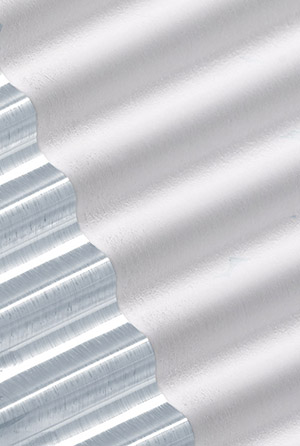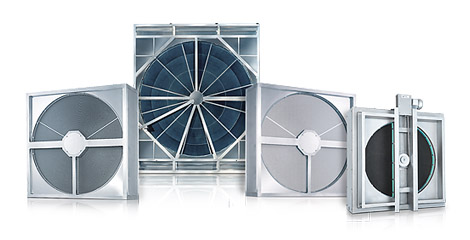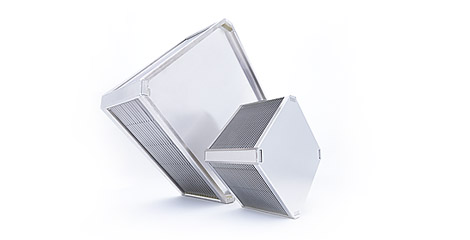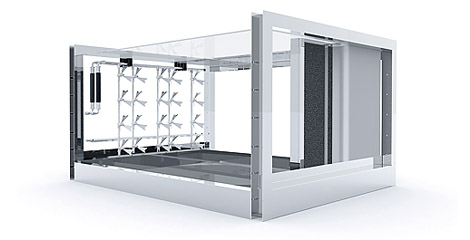Sorption (from the Latin sorbere, ‘to swallow’) refers to a process in which one substance is collected by or held fast by another . The collecting substance is referred to as the sorbent.
Absorption

The term ‘absorption’ (from the Latin absorptio, ‘aspiration’) generally refers to one substance being taken up or collected by another. This may lead to chemical reactions taking place.
Thus, for example, water absorbs and stores carbon dioxide (CO2) gas. Gas particles diffuse through the phase boundary interface of the water and are thus held in the water. It is because of this that the oceans form the Earth’s largest carbon dioxide storage system.
Absorption is used in the chemicals industry for purposes including gas cleaning and for separating useful substances from gas mixtures. It can also be used to desulphurise flue gases.
Adsorption
In contrast, ‘adsorption’ (from the Latin adsorptio, adsorbere, ‘to suck in’), designates the accumulation or concentration of gases or fluids on the surface of a solid body - without the gases or fluids being taken into the body. Thus, a sponge holds water within its pores. but the water is held only on its surfaces - it does not penetrate the material of the sponge itself. The process of adsorption is used for various purposes, including to purify drinking water and treat waste water. And, importantly, for collecting moisture from the air.
Klingenburg uses adsorption to recover and regulate humidity and for air drying for air-conditioning and process air (e.g. for wood or sewage sludge drying).
The HUgo sorption rotor features a patented zeolite whose particle sizes are in the order of nanometres (300 nm). Its enormous number of pores results in a very large overall surface area, to which airborne water becomes attached and can then be transported further. This makes it possible, for example, to capture a large fraction of the moisture in an outgoing airstream, including the latent heat it contains, so that it can be blown back into the building.
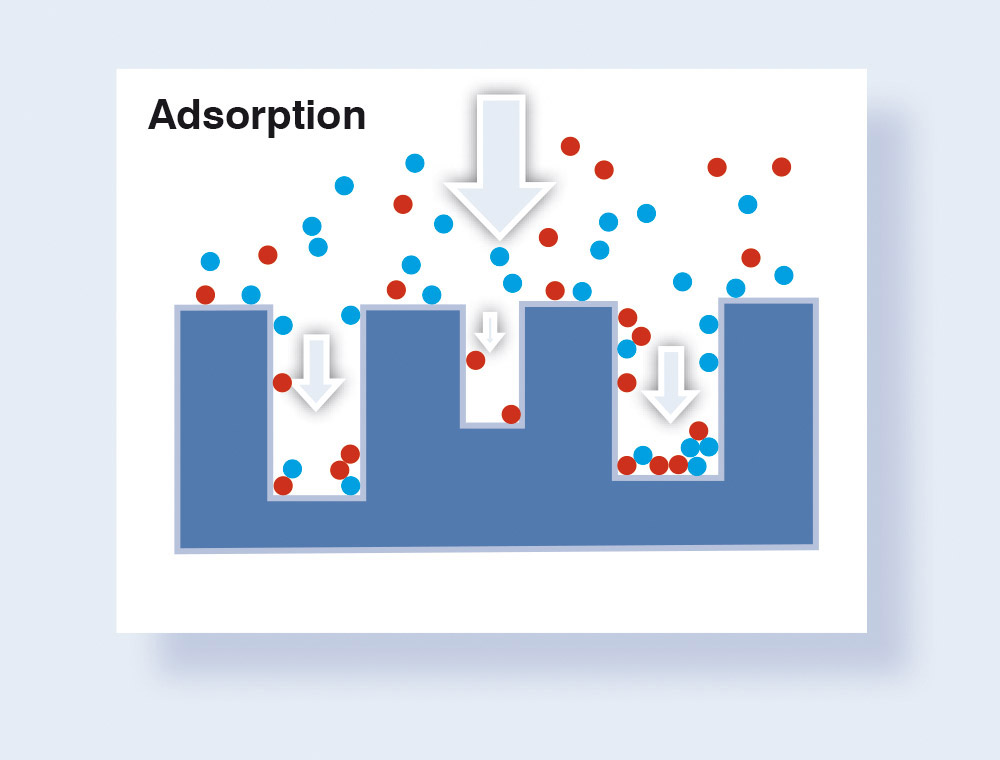
Extra-Fine Zeolite Coating
The particle sizes of the HUgo zeolite coating are considerably smaller than those of comparable products. Consequently, the adsorption kinetics (the speed of adsorption and desorption) are much higher. HUgo offers the highest performance without any danger of bacterial growth or odours - and low pressure loss as well. This type of rotor is used particularly often in systems including humidification and cooling. The HUgo is particularly effective in warm zones with high humidity. By drying and pre-cooling the air entering from outside, energy-intensive cooling and air-conditioning processes can be massively reduced.
View of a rotor storage mass. The storage mass on the left is uncoated, while that on the right is coated with Klingenburg’s HUgo coating.
